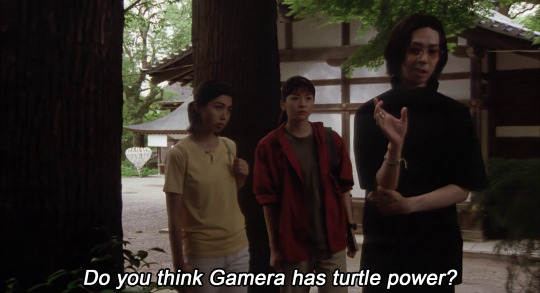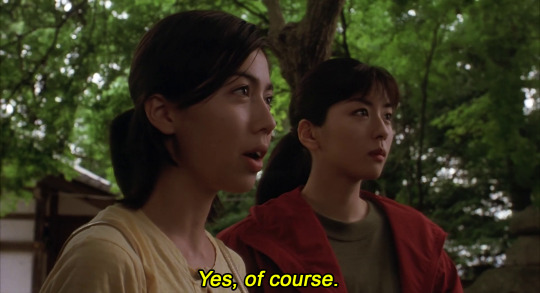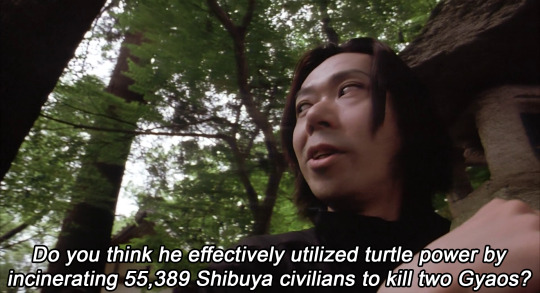#gamera 3 revenge of iris
Explore tagged Tumblr posts
Text

14 notes
·
View notes
Text


Gamera Movie Marathon
Gamera the Giant Monster / The Invincible
Gamera vs Barugon
Gamera vs Jiger
Gamera vs Guiron
Gamera vs Zigra
Gamera vs Gyaos
Gamera vs Viras
Gamera Super Monster
Gamera Guardian of the Universe
Gamera 2 Attack of Legion
Gamera 3 Revenge of Iris
Gamera the Brave
#gamera movie marathon#Gamera movie#gamera movies#gamera the giant monster#gamera the invincible#gamera vs barugon#gamera vs jiger#gamera vs guiron#gamera vs zigra#gamera vs gyaos#gamera vs viras#gamera super monster#gamera guardian of the universe#gamera 2 attack of legion#gamera 3 revenge of Iris#gamera the brave#gamera#gyaos#guiron#zigra#iris#legion#barugon#jiger#Zedus#Toto#hyper gyaos#gamera franchise#movie marathon
16 notes
·
View notes
Text
March 6 (1999)
Happy 24 years to Gamera 3: Revenge of Iris, the third film in the Heisei trilogy.
And if you know anything at all about Gamera movies, I probably don’t need to tell you this one is good. Like, not just ‘I enjoy it’ good, but objectively good. Of course, like with anything, opinions will vary, but this film is generally regarded as one of the best Kaiju films of all time – and along with the rest of the Heisei trilogy, genuinely good movies without even considering a preference for ones with monsters in them.
But what I’m going to talk about is the fact the three most important human characters in this film are women.
No corner-cutting, no "Asagi is the most plot-important but these other two are the male leads” like we get with Guardian of the Universe, if you are looking for a male lead in Revenge of Iris, you’ll have to either pick the minor villain who gets crushed by a building, the comic relief guy who gets a serious arc but is absent for the climax, or the kid who gets tentacle-slapped out of the grand finale. Or Gamera, I guess.
Our main character here is villain protagonist of sorts Hirasaka Ayana, a dark mirror to the child-bonds-with-Gamera concept that has been explored in various ways throughout the films prior. Having lost her parents due to Gamera’s fight with Gyaos four years earlier, and having subsequently suffered abuse at the hands of her aunt and uncle, Ayana walks down a dark path of vengeance with the aid of a juvenile kaiju named Irys (Iris in the subtitles and some versions of the title) whose origins are… never really clear but we get a few options. Also never really clear is whose negative emotions are corrupting who, or if it’s a little of both, but the end result is a roaring rampage of revenge against Ayana’s abusers up-to-and-including Gamera himself, leaving a trail of destruction that Ayana can’t put a stop to even once she realizes she wants to.
Re-joining from previous entries in the trilogy are Nagamine Mayumi, the ornithologist whose experience with the first Gyaos aids in studying recent attacks by a new Gyaos subspecies, and Kusanagi Asagi, whose previous bond with Gamera draws her into the investigation of Ayana’s similar bond with Irys. Inspector Osako (aforementioned comic relief guy) also returns and completes his minor arc throughout the three films of overcoming his cowardice and returning to investigative work, and his reunion with Miss Nagamine is genuinely touching, both in the film itself and with the addition of several deleted scenes that expand on their conversations. The pair’s team-up is brief, however, and Osako’s purpose throughout the rest of the film is simply to get Moribe into the right place at the right time to get tentacle-slapped out of being able to do anything important.
Instead, the focus of the latter part of the film is the intergenerational team-up of both major female protagonists from the first movie in the trilogy, who never once said a single word to each other in that entire film but are now, four years later, actually getting to meet and bond and put their wits and resolve together to help save a young Ayana from both Irys’s ill effects on her mind and the efforts of a pair of human villains to use her to bring about the apocalypse. Gamera is, of course, the true hero in the end, but the two women’s concern for Ayana is made the driving force of the narrative, to the point that unlike in the previous films, the military and government take a backseat and a lot less time is spent going over the science of how to stop the monster of the year.
The one male character that even makes it to the final plot-important moments of the film (Moribe, after miraculously recovering from being tentacle-slapped out of his hero moment) feels like a complete afterthought and a shoddy attempt to imply a future romance. Right before he wakes up (long after the action is over) and rushes over to comfort Ayana, there’s a shot that lingers on Asagi and Miss Nagamine gently helping Ayana up by the shoulders after she’s been revived, and that really feels like what the core of this movie is.
…Oh, and there’s also giant monsters, I guess.
Gamera has a dark, spiky, edgy design that heralds his return to a destructive, semi-villainous entity like in the 1965 original, however this time it’s explicitly an ‘ends justify the means’ scenario wherein he’s laser-focused on destroying the Gyaos as quickly as possible to prevent even more death in the long run. Gyaos gets the cool, wyvern-like Hyper Gyaos redesign and there’s a neat special effects shot that’s unfortunately very easy to miss, wherein one of their sonic scalpel beams cuts the Shibuya 109 tower in half down the middle (on the first 3-4 watches I mistakenly thought it was a continuity error and the tower was destroyed twice). Irys has the single-glowing-eye-set-deep-inside-a-skull look for the head, and is certainly a subscriber to the wisdom that the best superpower of all time has already been invented, and it’s Doc Ock tentacles. There’s notably less overall monster action in this film than some others, but what’s there is a very impressive mix of suits and CGI that, except for maybe one or two broad daylight scenes, holds up well to this day.
This film’s ending is often a point of contention, giving us an apparent cliffhanger showing hundreds or perhaps thousands of Hyper Gyaos converging to attack Japan right before the credits roll. To clear it up, Gamera wins, according to authorial intent, and whatever reservations one might have about Shusuke Kaneko as a director, the film also implies this by its tone – we end on an announcement that the military will join forces with Gamera to fend off the attack, while Asagi and the others make clear his determination and that he won’t be alone in this fight. It’s a triumphant moment, not a bleak one, and IMO, a perfectly fine ending to a movie and a trilogy.
Jumpscare warning for some very brief but horrific scenes where we see the results of Irys killing people by draining them to withered, skeletal husks. Also, minor squick warning for one scene where it looks an awful lot like some consensual, but very non-platonic tentacle stuff is about to happen, although after seeing how the English dub handles this part and consulting other readings of the film, I’ve concluded that the scene where Ayana starts unbuttoning her shirt collar and says “Iris, I’m so hot…” right after Irys has evolved from juvenile to teenager form, is actually meant to imply her body is literally overheating from the bond and she is beginning to feel physically ill. Whatever the case, the scene cuts away and all we’re later told happened is that Irys attempted to merge with her, something a fully-grown Irys tries to do again later in the film.
Overall, it should be easy to guess that this film is extremely high on my list of favorites, although competition for the top spot is very fierce as you’ll see when we get to a few of the others. Only real drawback is that it is a tinge dark and loses out some on the ‘fun’ factor because of it. And just because it’s part of what I look for in a fandom, shippability takes a hit here because I just haven’t been inclined to seriously ship anything from this film alone, mostly because the age differences between the three main characters are all just right past the point where it starts being down to personal comfort zones. I’m not entirely opposed to Asagi/Nagamine since they’re both adults here and the film focuses on that as their dynamic, plus Nagamine is meant to be especially young in her field per a conversation in GoTU. Adding in villains and side characters, Nagamine/Asakura has potential since they’re set up as rivals early on, I wouldn’t say I’m quite on-board with the whole “redeem the religious zealot child kidnapper” angle but I can see an Asakura who survives the ending left directionless and with shattered faith. And I guess you could always add insult to injury and ship Ayana with Moribe’s sister instead of him, they seem like they could’ve been friends if Moribe wasn’t always getting in between them.
(I would also endorse the idea of some kind of AU/rewrite/reboot/remake that casts Asagi and Ayana as same-aged childhood friends, with a friends-enemies-lovers arc that leads to a direct Gamera-vs-Irys face-off with both of them bonded at the same time. Having them be true mirrors to one another, with a personal conflict over Ayana’s parents’ deaths and Asagi’s faith in Gamera, is really this big, obvious idea the film put on the table the moment it introduced Irys, but could never do anything with because Ayana wasn’t part of the original plan for the trilogy and had to be worked into a universe where Asagi was older and her bond with Gamera already broken.)
#gamera#gamera 3#gamera 3 revenge of iris#kusanagi asagi#nagamine mayumi#hirasaka ayana#gyaos#irys gamera#i'm exaggerating a little with moribe#he does throw a knife that accidentally hits ayana in the face#so y'know he does do SOMETHING at least#gamera march#this is an ayana appreciation blog#a lesbian reviews all the gamera movies
3 notes
·
View notes
Text

Gamera during his final showdown with Iris in the Kyotō Station in Gamera 3: Revenge of Iris (1999).
Like Atami Castle in King Kong vs. Godzilla (1962), the new Kyoto Station was only a couple of years old (it opened in 1997) before it was destroyed in the kaiju battle.
45 notes
·
View notes
Text

Monster March 2024 29. Gamera (1999)
#fanart#sketch#drawing#toku#tokusatsu#fan art#kaiju#doodle#gamera#gamera 3: revenge of iris#monster march 2024#absolute guardian of the universe
27 notes
·
View notes
Text

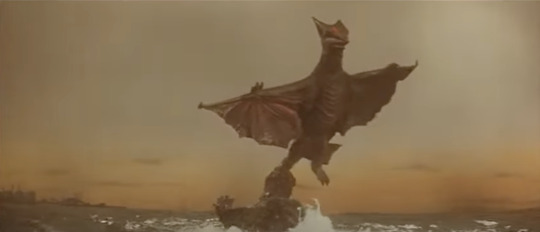


Fun Gamera vs Gyaos and Gamera 3 references in Gamera Rebirth!
50 notes
·
View notes
Text
Now watching:

#gamera 3: revenge of iris#shusuke kaneko#shinobu nakayama#ai maeda#yukijiro hotaru#ayako fujitani#kaiju#kaiju summer#Gamera#gyaos#iris
5 notes
·
View notes
Text
Au! But it's mostly about one character
This post is mostly about the character Iris and the arc [or The Iris Saga idk]
Ft. Frieza and Frost
Focus'

Yeah, just important characters and items.
I was going to cook the plot in this post, but it might be a post by itself bc I'm too tired + I need to rewatch the movie again to refresh my memory.
But basically:

[The fusion is not in the way some of y'all would think] Gotta love doing a meme that's also serious, lol.
And yeah here's the ref

That's it. Also, I've realized that I can write for the most part, but I struggle with character building and having them stay in character. So, basically, writing plots, the events of the story, and world building are the things I'm at least good at writing. Uhh, yeah. Also, I'm actually trying to figure out a name for the Au itself, I'm going to take suggestions here and in the Discord soo yeah.
Anyways I'll see yall later, I'm tired and hungry.
Anyways join the Discord pls!
The plot
#crossover#crossover au#art#fanart#artwork#crossover art#dbz#dbz freeza#dbs#dbz frieza#frieza#freeza#dbs frost#frost dbs#frostdbs#dbz au#alternate universe#gamera#iris gamera#gamera 3: revenge of iris
4 notes
·
View notes
Photo








Gamera 3: Revenge of Iris (1999)
6 notes
·
View notes
Text

Monster march 2023 day 20: Irys
#my art#digtial artist#digtial art#digtial illustration#digtial drawing#kaiju#gamera fanart#gamera 3#Revenge of irys#Irys#monster march 2023#monster march#monstermarch2023#monstermarch#tokustasu#toku fanart
2 notes
·
View notes
Text
Haven’t seen the Heisei Era Gamera trilogy in so long! Glad to see they’re all on Prime!
#gamera: guardian of the universe#gamera: advent of legion#gamera 2: advent of legion#gamera 2: attack of the legion#gamera: revenge of iris#gamera 3: revenge of iris
0 notes
Text
OHHHH


gamera 3: revenge of iris (1999) ...or something
pretty cool movie.
#WOW#also dont stab me . i cant really draw ppl. i draw big monsters for a reason#<- THEY LOOK SO GOOD THOUGH#LOVE THIS#iris gamera#gamera 3: revenge of iris
35 notes
·
View notes
Text
Kaiju Week in Review (September 3-9, 2023)
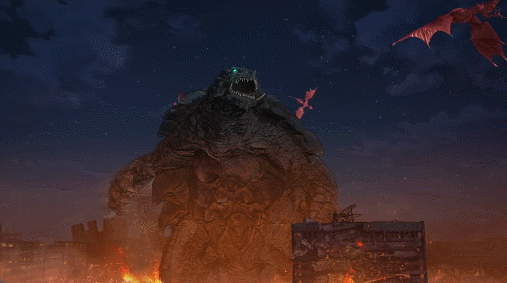
I was a bit nervous about GAMERA -Rebirth-; the animation looked dodgy and Netflix has a shaky track record with kaiju shows. I'm pleased to report this is the best entry in the genre that they've put their name on. Good characters, great action (brutal as always), and actual episodic storytelling that effortlessly weaves in elements from the Showa films beyond all the returning kaiju. Watch it immediately.
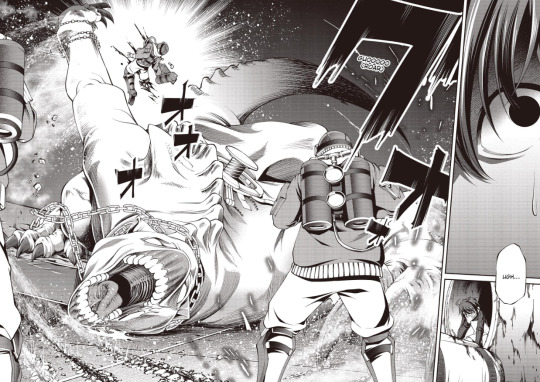
Tie-ins abound for GAMERA -Rebirth-: a two-part novelization, a manga adaptation, and a prequel manga that sheds some light on [UNBELIEVABLY MASSIVE SPOILERS]. That prequel manga (GAMERA -Rebirth- code thyrsos) is being published online for free in both Japanese and English. You can read the first chapter here.
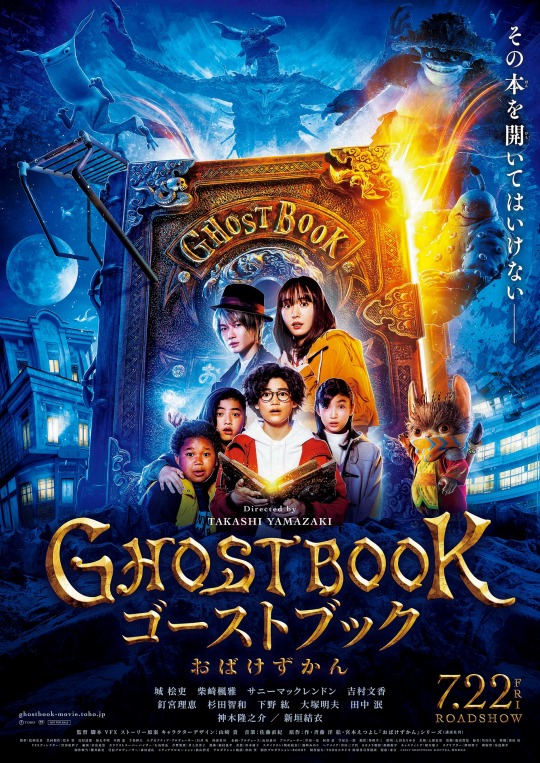
In unofficial translation news, English subtitles for GAMERA.1999 (1999) and yokaipedia (2022) are now available. The former is Hideaki Anno's making-of documentary for Gamera 3: Revenge of Iris; the latter is a fun, child-friendly fantasy from Godzilla Minus One director Takashi Yamazaki with a big ol' centipede-dragon at the end. (It's also maybe the first Japanese kaiju film I've ever seen with a major Black character.) I haven't gotten to GAMERA.1999 yet, though from scrubbing through it, it seems like a lot of dialogue was just ignored by the translator. Shame, as that's one I've wanted for a long time.
youtube
We have a teaser for Monarch: Legacy of Monsters, as well as a premiere date for the first two (out of ten) episodes: November 17. (I am being showered with Media for my 30th birthday.) The big news from this trailer is that John Goodman is reprising his role as Bill Randa from Kong: Skull Island. I assume that's going to be through flashbacks and old recordings only, since he was eaten by a Skullcrawler in that one. We also catch glimpses of two new creatures, a dragon and a crab from what I can tell. The latter looks to be fighting a Mother Longlegs.

Fandango and AMC have added mostly-empty listings for Godzilla 2000 on November 1. Fathom Events screened Godzilla Against Mechagodzilla on November 3 last year; despite randomly showing Tokyo SOS back in March, I gather they're making a tradition out of Godzilla Day. Note that the listed runtime is longer than the film itself. Predictions for the program: another message from Keiji Ota, the 2022 Godzilla vs. Gigan short, and the Japanese version of G2K. Interesting that they're running the last Toho Godzilla film to receive a wide release in the U.S. exactly a month before Godzilla Minus One has a wide release of its own here.
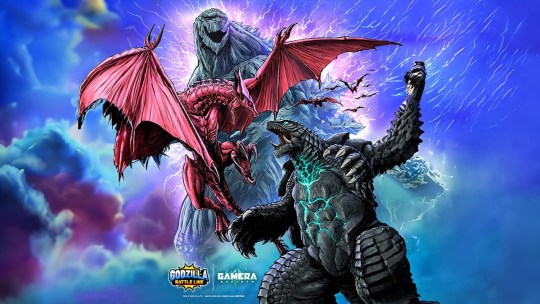
Gamera isn't a meta-defining Godzilla Battle Line unit... but he's Gamera in a Godzilla game, so I've been using him in every match since I unlocked him. He's gearing towards demolishing flying units, with fireballs that deal more damage against them and knock them back. A pity that he's arriving well after those units were at their most dominant.
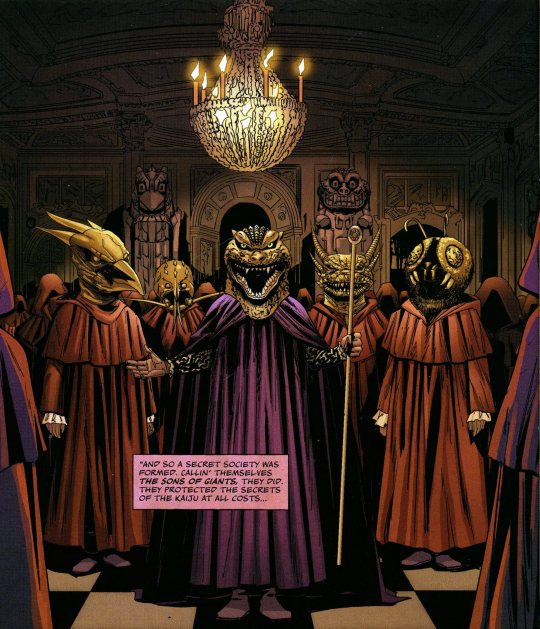
Godzilla: Here There Be Dragons #3 still isn't giving me much to write home about, but the kaiju cult creeping to the forefront intrigues. Also cool to see Ebirah in a starring role.
youtube
Marubeni, one of Japan's biggest general trading companies, put out a bizarre commercial featuring samurai, zombies, a meteor, and a refurbished GMK King Ghidorah. The ad now has English subtitles, and you can watch a Ghidorah-centric behind-the-scenes video here.
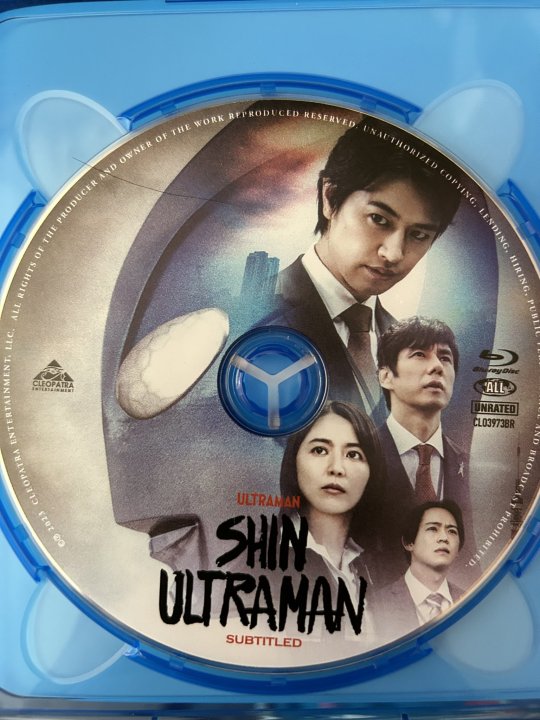
I cannot believe I have more Cleopatra Entertainment fuckery to report on with regards to their Shin Ultraman releases, but they're truly trying to take the "Worst Film Company of 2023" title from the members of the AMPTP. Their third attempt at a barebones disc is starting to reach customers... but the ones who already received the initial replacement disc are being told no more will be sent. @starestream is trying to figure out if they'll be selling the third edition on their site, since it seems buying it anywhere else is a gamble. (Physically, the third edition looks almost the same as the first two, set apart only by the "SUBTITLED" text on the disc.) Either way, it's another blow to a movie that truly doesn't deserve this.
91 notes
·
View notes
Text
Some thoughts on Gamera, Noriaki Yuasa, and Gamera 3: Revenge of Iris, 25 years later.
(Final thoughts below the cut if you want to skip the fic)
So the story goes, in 1999, Noriaki Yuasa, the leading director and self-proclaimed father of Gamera throughout the Showa Era, attended a screening of Gamera 3: Revenge of Irys alongside Shusuke Kaneko, director of the Heisei trilogy. Despite Yuasa’s criticisms of the tone of the 90s films, the two got along well, until Gamera’s destruction of Shibuya halfway through the film, at which point Yuasa stood up and left the theater.
I don’t know if Yuasa ever saw the film’s ending before his death in 2004, nor could I speculate what his opinions of it would have been – and if there’s a film I wished he’d lived to see and judge, it would’ve surely been Ryuta Tasaki’s Gamera the Brave in 2006, which excised much of the dark tone of Kaneko’s films but continued and codified the idea of using Gamera to address real childhood trauma and grief, something Yuasa’s films hinted at only a few times and never seemed able to commit to.
But as a fan looking back 25 years later, I can’t help but wonder if Kaneko, who once described Gamera 3 as a film intended to answer the question Who is Gamera? had hoped Ayana’s rescue during the final confrontation might have swayed Yuasa’s stance on his films and his shepherdship of the character. In my mind, when seen in context Kaneko’s Gamera is not a rebuke, but a reiteration and perhaps an evolution of Yuasa’s. The Gamera that rose from his injuries to plunge a hand into Irys’s torso may as well have done so with googly eyes, a toothy grin, and the classic theme song blaring.
1 note
·
View note
Text

Gamera in the Kyoto Train Station for his final battle with Iris.
#Gamera 3: Revenge of Iris#Gamera#kaiju#tokusatsu#Suitmation#Kodokawa Daiei Studio#Kyoto Train Station
102 notes
·
View notes
